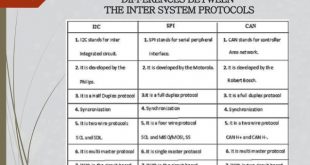Conventional modem designs can be termed as ‘fixed-function’ modems ‘ because almost all
modem functionality in these modems are implemented in silicon resulting in large die sizes and
limited flexibility. As the number and complexity of air interfaces increase, so does the challenge
involved in planning, designing, manufacturing, testing and maintaining modems.
More importantly, as wireless standards continue evolving at a rapid pace, the traditional, rigid
hard-modem design flow allows for little in terms of flexibility and adaptability. With each new
release and ratification of a wireless interface standard, conventional modem designs typically
require costly and time-consuming silicon re-design and spin to accommodate the new
specifications. This greatly impacts the time-to-market of OEMs and carriers who want to
support these new wireless standards.
Accommodating ever-increasing region and carrier specific modes, bands and protocols require
significant resources to test and design modern modems. This results in conventional hard modem designs that are large, complex and expensive.
Moreover, conventional modem designs implement discrete fixed-function blocks for each
supported connectivity protocol can result in larger die sizes and higher power consumption.
Ultimately, conventional fixed-function modems, with their lengthy design cycles, requirement for discrete fixed function hardware and lack of adaptability results in chips that are large, complex, inefficient and expensive. For carriers, this results in lower device performance and increased network capital expenditure costs and for vendors it means less competitive products.
A software modem, commonly referred to as a softmodem, is a modem with minimal hardware that uses software running on the host computer, and the computer’s resources (especially the central processing unit, random access memory, and sometimes audio processing), in place of the hardware in a conventional modem.
Softmodems can be separated into two classes: controllerless modems and pure software modems. Controllerless modems utilize a DSP on the modem itself to perform modulation, demodulation and other tasks. Some, known as “host-based” modems, may still use some amount of the host’s CPU power for some tasks. Pure software modems perform all modem tasks on the host PC’s CPU, while the hardware provides only analog-digital conversion and connection to the telephone network.
 International Defense Security & Technology Your trusted Source for News, Research and Analysis
International Defense Security & Technology Your trusted Source for News, Research and Analysis
